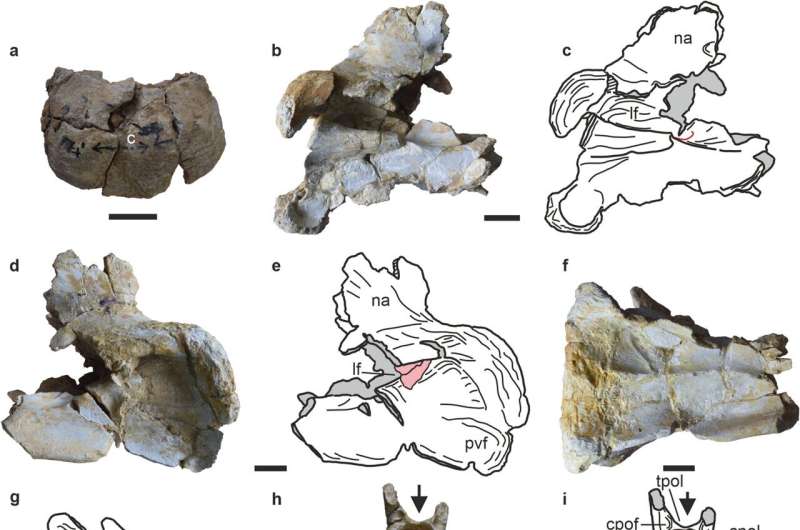First ever remains of a dicraeosaurid sauropod unearthed in India

A team of archaeologists from the Indian Institute of Technology and the Geological Survey of India, has unearthed the first ever remains of a dicraeosaurid sauropod in India. In their paper published in the journal Scientific Reports, the group describes the fossil, its condition and where it fits in with other dinosaurs of the Middle Jurassic.
The fossil (a partial dorsal vertebra) was dug up at a site in the Thar Desert near the city of Jaisalmer, in the state of Rajasthan. Prior research has shown that during the Mesozoic Era, the area was a shoreline along the Tethys Ocean. The newly found fossil has been dated to approximately 167 million years ago and identified as a member of the dicraeosaurids, which were a group of dinosaurs with long necks that fed on vegetation. It is the first member of the group to have ever been found in India—and the oldest in the world.
The team has named their new find Tharosaurus indicus. They note that dicraeosaurids, such as T. indicus, are all part of a larger group called diplodocoids, which all had long bodies and necks and spikes on the backs of their necks. T. indicus., the researchers note, has some slight differences from others in its group, such as a long depression on the side of its neck bones and neural spines that are believed to indicate it had uniquely facing spikes. It also had a frontal vertebra surface reminiscent of a heart near its tail bone.
The research team suggest their find is likely just the first of many to come, and together such fossils hint at the possibility that the area where the fossil was found likely played an important role in the emergence of neosauropods—also long-necked, vegetation eating dinosaurs.
They note that other fossils have been found in the area that also suggest the region played an evolutionary role in the development of many vertebrate groups. They conclude by noting that work such as theirs is still limited in India, due to an inadequate supply of resources—much more needs to be done to find out just how rich the country might be in dinosaur fossils.
More information: Sunil Bajpai et al, Fossils of the oldest diplodocoid dinosaur suggest India was a major centre for neosauropod radiation, Scientific Reports (2023). DOI: 10.1038/s41598-023-39759-2
Journal information: Scientific Reports
© 2023 Science X Network
No comments:
Post a Comment